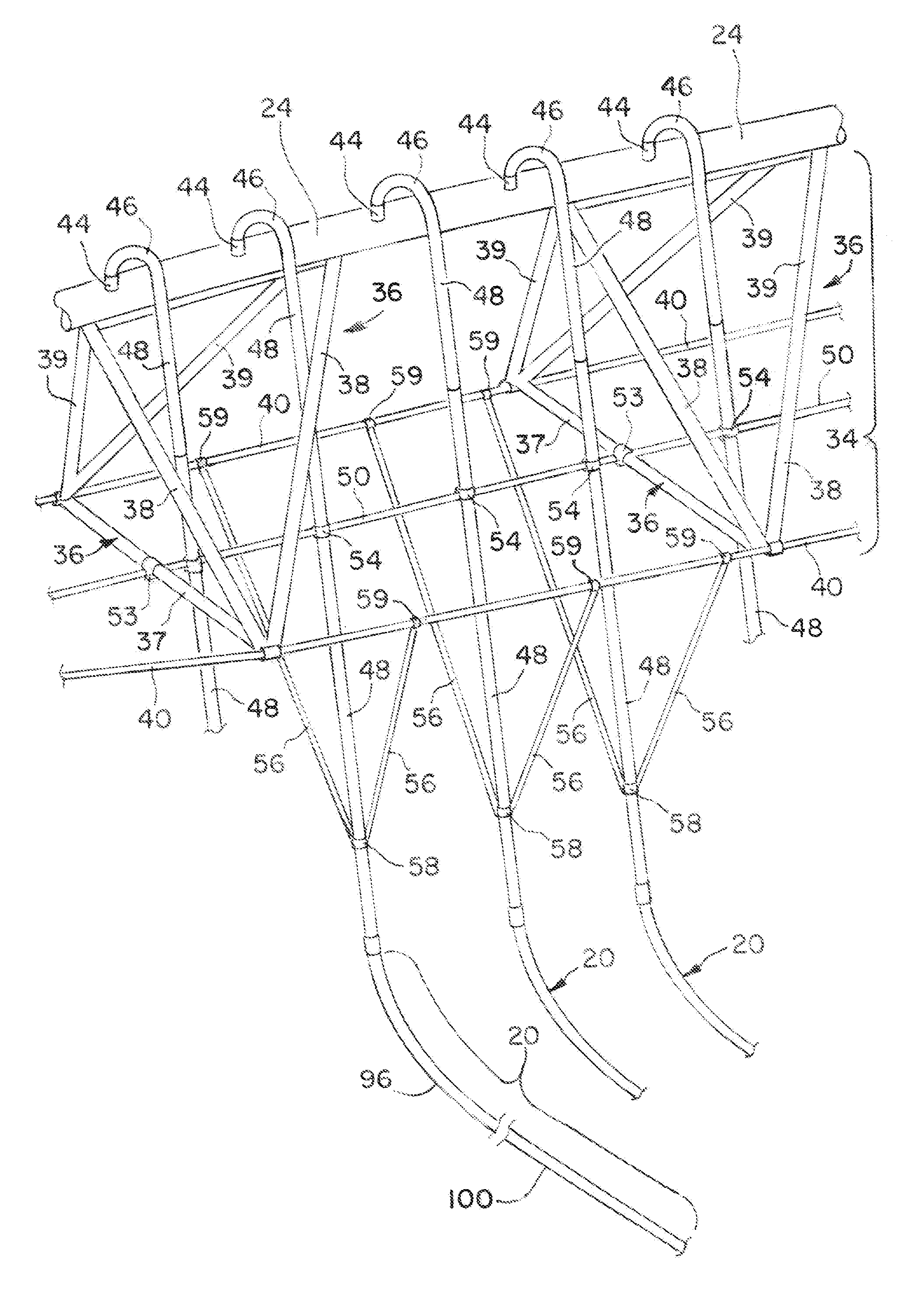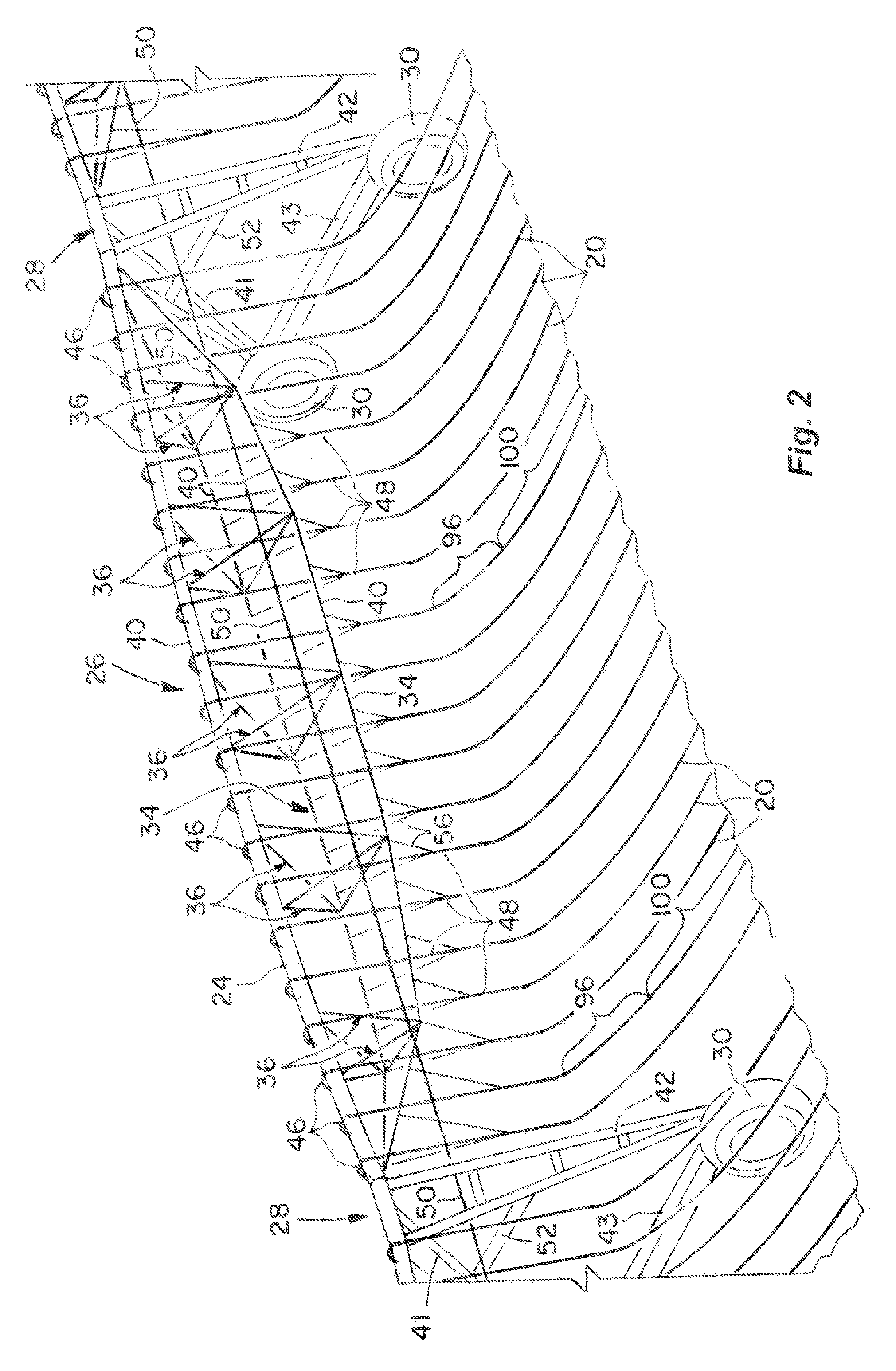Mobile drip irrigation with precise and uniform water distribution
a technology mobile drip irrigation, which is applied in the field of precise and uniform water distribution of mobile drip irrigation, can solve the problems of significant water loss due to evaporation before the remaining water, sprayed water which reaches the plants is susceptible to some evaporation, and the amount of water lost by evaporation is still significant, so as to facilitate the movement of the drip tube, facilitate the reversal of the direction of the mobile drip irrigation system, and facilitate th
- Summary
- Abstract
- Description
- Claims
- Application Information
AI Technical Summary
Benefits of technology
Problems solved by technology
Method used
Image
Examples
Embodiment Construction
[0030]The present invention involves anchoring, retaining, positioning and using drip tubes 20 in a mobile drip irrigation device 22, shown in FIGS. 1 and 2. When the drip tubes 20 are anchored, retained, positioned and used in the manner discussed in more detail below, irrigation water is more precisely, uniformly and effectively distributed over an agricultural field where plants are growing in soil, while simultaneously achieving significant operational and functional improvements.
[0031]The mobile drip irrigation device 22 comprises an overhead water distribution conduit 24 formed as a number of connected segments 26 of the device 22. Each device segment 26 extends between and is supported by a motorized tower 28. Each tower 28 includes two wheels 30 which engage the soil of the agricultural field and which are driven by electric or hydrostatic motors (not shown). The wheels 30 of each tower 28 move the distribution conduit 24 over the agricultural field.
[0032]An inner end of the...
PUM
 Login to View More
Login to View More Abstract
Description
Claims
Application Information
 Login to View More
Login to View More - R&D
- Intellectual Property
- Life Sciences
- Materials
- Tech Scout
- Unparalleled Data Quality
- Higher Quality Content
- 60% Fewer Hallucinations
Browse by: Latest US Patents, China's latest patents, Technical Efficacy Thesaurus, Application Domain, Technology Topic, Popular Technical Reports.
© 2025 PatSnap. All rights reserved.Legal|Privacy policy|Modern Slavery Act Transparency Statement|Sitemap|About US| Contact US: help@patsnap.com



